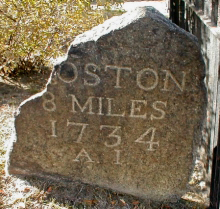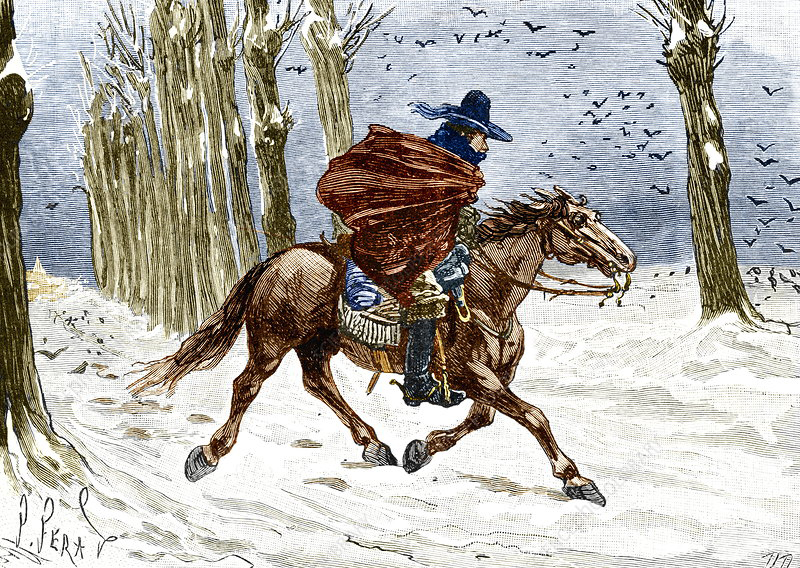
Part I, The Post Rider
See part 2 here.
See part 3 here.
Nowhere is there a statue honoring the first post rider in the New World; likewise, there is nowhere a painting honoring his first riding of the mail circuit from New York City to Boston. In fact, we will never even know his name, for it has been lost to history. What we do know, however, is that he departed New York on Jan. 22, 1673, and after two arduous New England winter weeks, he arrived in Boston on Feb. 5.
His route was perilous: he followed faint moccasin paths, and here and there a cart path from farm to farm. The danger was very real, for he passed through more than 200 miles of backwoods territory, which were filled with dangers, natural and otherwise. Some nights no doubt, he partook of the hospitality of various farmers and villagers along the way, but no doubt he also spent many other nights sleeping alone under the stars.

The landscape he rode through was a combination of rolling hillsides, bogs, marshes, high ridges, and tangled forests. Some sections of his ride followed ancient Indian pathways, and eventually these formed what we today call the Boston Post Road. When the post rider reached the New Haven Colony, he drew mail from his saddlebag and exchanged it for mail that was waiting for him.
Then, instead of heading east as we might expect, he turned north, perhaps up what today is Whitney Avenue, and set out for Hartford, thence to Springfield, thence to Worcester, and finally to Boston. To cross the Connecticut River south of Hartford was truly a daunting task in this time, and one which the post rider chose to forego; hence he took what would later come to be known as the upper route to Boston.
This pioneer mail carrier rode at the command of Charles II, king of England, as well as the governors of New York and Connecticut. The Post Road which would later develop would be the very road over which news of an American revolution would travel one hundred years later.
What else do we know about this mysterious first post rider? Precious little indeed; about all that we actually know is this: when chosen by Govs. Lovelace and Winthrop, he was a “stout fellow, active and indefatigable, and sworn as to his fidelity.” He was paid a salary, which was augmented by charges for letters and packets he picked up and delivered along the way.
Little could that first lonely post rider suspect as he rode through wind and snow, that from his small beginning, a great mail system and a network of “post roads” and “turnpikes” would develop as the years passed.
To be continued